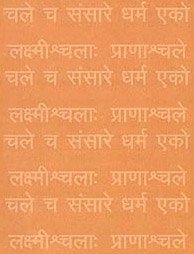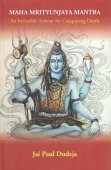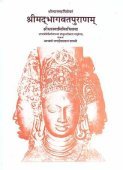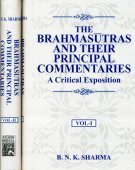Samkhya, Sāṅkhya, Saṃkhyā, Sāṃkhya, Saṅkhyā, Sankhya, Shankhya, Saṃkhya: 39 definitions
Introduction:
Samkhya means something in Hinduism, Sanskrit, Jainism, Prakrit, Buddhism, Pali, the history of ancient India, Marathi, Hindi. If you want to know the exact meaning, history, etymology or English translation of this term then check out the descriptions on this page. Add your comment or reference to a book if you want to contribute to this summary article.
In Hinduism
Ayurveda (science of life)
Source: Wisdom Library: Āyurveda and botanySaṃkhyā (संख्या, “enumeration”).—One of the ten Parādiguṇa, or, ‘10 pharmaceutical properties’.—It is a Sanskrit technical term from Āyurveda (Indian medicine) and used in literature such the Caraka-saṃhitā and the Suśruta-saṃhitā. According to Caraka, these ten properties (guṇa) are the means to success in therapeutic treatment. Saṃkhyā refers to the determining of an amount, eg: the number of symptoms, doṣas, medicines, doses.
Source: Pitta Ayurveda: Samanya GunaSankhya means number (numerical figure or digit). It is one of the most ancient and fundamental philosophy in India. In English language, Sankhya means counting. The essence of Sankhya is to access the amount of a particular thing. Even though, it is related to numerical but it also acknowledges observation, deduction and proof as a way of information and awareness. Every one has this Sankhya guna but there are very few people who are able to accurately interpret it.
Source: Shodhganga: Ayurveda siddhanta evam darshanaSamkhya-guna has been mentioned by Charaka as ganita, i.e. ‘counting’. Gangadhara has added that all other Samkhyas except one are nothing but abhyasa / gunadhikya of one (eka-samkhya).
Source: gurumukhi.ru: Ayurveda glossary of termsSaṃkhyā (संख्या):—Number; one among 10 paradi guna.

Āyurveda (आयुर्वेद, ayurveda) is a branch of Indian science dealing with medicine, herbalism, taxology, anatomy, surgery, alchemy and related topics. Traditional practice of Āyurveda in ancient India dates back to at least the first millenium BC. Literature is commonly written in Sanskrit using various poetic metres.
Vaishnavism (Vaishava dharma)
Source: ISKCON Press: GlossarySāṅkhya (साङ्ख्य).—Analytical discrimination between spirit and matter and the path of devotional service as described by Lord Kapila, the son of Devahūti in the Śrīmad-Bhāgavatam; analytical understanding of the body and the soul. Sāṅkhya-yoga-the process of linking with the Supreme by intellectually tracing out the source of creation; An analysis of matter and spirit taught by sage Nirīśvara Kapila. One of the six systems of Vedic philosophy.
Source: Pure Bhakti: Bhagavad-gita (4th edition)Sāṅkhya (साङ्ख्य) refers to “(1) Analytically discriminat-ing between spirit and matter (2) The path of bhakti practised by analyzing the twenty-four universal elements”. (cf. Glossary page from Śrīmad-Bhagavad-Gītā).
Source: Pure Bhakti: Brhad BhagavatamrtamSāṅkhya (साङ्ख्य) refers to:—The process of enumeration. Two major sāṅkhya philosophies are found in Vedic literature. An elaborate description of theistic sāṅkhya philosophy is given in the teachings of Śrī Kapiladeva, found in Śrīmad-Bhāgavatam, Third Canto. Atheistic sāṅkhya philosophy involves an analysis of spirit and matter. (cf. Glossary page from Śrī Bṛhad-bhāgavatāmṛta).

Vaishnava (वैष्णव, vaiṣṇava) or vaishnavism (vaiṣṇavism) represents a tradition of Hinduism worshipping Vishnu as the supreme Lord. Similar to the Shaktism and Shaivism traditions, Vaishnavism also developed as an individual movement, famous for its exposition of the dashavatara (‘ten avatars of Vishnu’).
Purana and Itihasa (epic history)
Source: archive.org: Puranic EncyclopediaSaṃkhyā (संख्या).—In ancient India digits up to 19 were in vogue. Bhāskarācārya the great mathematician, has in his work, "Līlāvatī", given the following names to the nineteen digits. 1 Ekam 10 Daśam 100 Śatam 1000 Sahasram 10000 Ayutam 100000 Lakṣam 1000000 Prayutam 10000000 Koṭi 100000000 Arbudam 1000000000 Abjam 10000000000 Kharvam 10000000000000 Trikharvam 1000000000000 Mahāpadmam 1000000000000 Śaṅku 1000000000 Jaladhi 100000000000000 Antyam 1000000000000000 Madhyam 100000000000000000 Parārdham 1000000000000000000 Daśaparārdham.
Source: Cologne Digital Sanskrit Dictionaries: The Purana IndexSāṅkhya (साङ्ख्य).—(Sāmkhyamukhya)—Śiva.*
- * Vāyu-purāṇa 30. 220. 97. 175.

The Purana (पुराण, purāṇas) refers to Sanskrit literature preserving ancient India’s vast cultural history, including historical legends, religious ceremonies, various arts and sciences. The eighteen mahapuranas total over 400,000 shlokas (metrical couplets) and date to at least several centuries BCE.
Vaisheshika (school of philosophy)
Source: Wisdom Library: VaiśeṣikaSaṃkhyā (संख्या, “number”) is one of the seventeen guṇas (‘qualities’), according to the Vaiśeṣika-sūtras. These guṇas are considered as a category of padārtha (“metaphysical correlate”). These padārthas represent everything that exists which can be cognized and named. Together with their subdivisions, they attempt to explain the nature of the universe and the existence of living beings.

Vaisheshika (वैशेषिक, vaiśeṣika) refers to a school of orthodox Hindu philosophy (astika), drawing its subject-matter from the Upanishads. Vaisheshika deals with subjects such as logic, epistemology, philosophy and expounds concepts similar to Buddhism in nature
Shaivism (Shaiva philosophy)
Source: McGill: The architectural theory of the Mānasāra (shaivism)Sāṃkhyā (सांख्या).—The philosophic system of Sāṃkhyā, “enumerationism”, undergirds the theology of Śaiva Siddhānta: among the thirty-six categories, twenty-five, beginning with puruṣa, are derived from Sāṃkhyā, to which eleven that are particular to Śaiva revelation are added to complete the system.
Source: Brill: Śaivism and the Tantric TraditionsSaṃkhya (संख्य) refers to “counting (while reciting)” (as opposed to Asaṃkhya—‘not counting’), as quoted by Hṛdayaśiva in his Prāyaścittasamuccaya (verse 10.27-35).—Accordingly, “Having recited [a particular mantra] along with [the practice of one of the] observances in accordance with the rules, and having bathed [at the end of the observance], one may recite that mantra for attaining supernatural powers. The skilled practitioner should do his recitation not too slowly, not indistinctly, not without taking [the meaning of what he recites] in, not too fast, not without counting (asaṃkhya), and not with his thoughts in confusion. [...]”.
Source: SOAS University of London: Protective Rites in the Netra TantraSaṃkhya (संख्य) refers to a “battle” (in dreams), according to the Svacchanda-tantra.—Accordingly, [verse 4.21-27, while describing inauspicious dreams]—“[...] [He dreams of] the destruction of houses, palaces, beds, clothes, and seats; defeat of oneself in battle (saṃkhya) and theft of ones things. [He] ascends or is amongst donkeys, camels, dogs, jackals, and herons, vultures, and cranes. [He rides on] buffalos, owls, and crows, eats cooked meat, [wears a] red garland, and ointment for the body. [...]”

Shaiva (शैव, śaiva) or Shaivism (śaivism) represents a tradition of Hinduism worshiping Shiva as the supreme being. Closely related to Shaktism, Shaiva literature includes a range of scriptures, including Tantras, while the root of this tradition may be traced back to the ancient Vedas.
Vyakarana (Sanskrit grammar)
Source: Shodhganga: Vaiyākaraṇabhūṣaṇasāra: a critical studySaṅkhyā (सङ्ख्या).—Number.
Source: Wikisource: A dictionary of Sanskrit grammar1) Saṃkhyā (संख्या).—A numeral such as एक,द्वि (eka, dvi) etc. In Panini Astadhyayi, although the term is defined as applicable to the word बहु, गण (bahu, gaṇa) and words ending with the tad. affixes वतु (vatu) and डति (ḍati), such as तावत्, कति (tāvat, kati) and the like, still the term is applied to all numerals to which it is seen applied by the people; cf M. Bh. on P. I. 1.23 also Pari. Sek. Pari. 9;
2) Saṃkhyā.—Numerical order; cf. स्पर्शेष्वेव संख्या (sparśeṣveva saṃkhyā) V. Pr. I. 49.
--- OR ---
Sāṃkhya (सांख्य).—A rule or a topic concerning number; cf. यदि तर्हि कृत्स्नः पदार्थोभि-धीयते लैङ्गाः सांख्याश्च विधयो न सिध्यन्ति (yadi tarhi kṛtsnaḥ padārthobhi-dhīyate laiṅgāḥ sāṃkhyāśca vidhayo na sidhyanti), M. Bh. on P. II. 2 24 Vart. 8,9.

Vyakarana (व्याकरण, vyākaraṇa) refers to Sanskrit grammar and represents one of the six additional sciences (vedanga) to be studied along with the Vedas. Vyakarana concerns itself with the rules of Sanskrit grammar and linguistic analysis in order to establish the correct context of words and sentences.
Nyaya (school of philosophy)
Source: Shodhganga: A study of Nyāya-vaiśeṣika categoriesSaṃkhyā (संख्या, “number”) or Saṃkhyāguṇa refers to one of the twenty-four guṇas (qualities) according to all the modern works on Nyāya-Vaiśeṣika.—Saṃkhyā (number) is the fifth quality (guṇa). It is a general quality. It can be apprehended by eye and skin. Praśastapāda defines saṃkhyā as for which one, two, three etc. are used that are known as saṃkhyā. Viśvanātha gives the definition of saṃkhyā thus the cause of the convention of counting is called number. According to Śivāditya, the definition of saṃkhyā is that which has the generality of numberness is known as saṃkhyā.
Annaṃbhaṭṭa also gives the similar definition of saṃkhyā as number is the cause of common usage of expressions like one, two etc. In this definition, the word hetu is used in the sense of asādhāraṇanimittakāraṇa i.e., the extraordinary efficient cause. Annaṃbhaṭṭa says that it exist in all the nine Dravyas saṃkhyā starts from one and ends with parārdha. Oneness is eternal and non-eternal, when it is in atoms, it is eternal and when it is in products, it is non-eternal. But number two or all other higher numbers are non-eternal everywhere.

Nyaya (न्याय, nyaya) refers to a school of Hindu philosophy (astika), drawing its subject-matter from the Upanishads. The Nyaya philosophy is known for its theories on logic, methodology and epistemology, however, it is closely related with Vaisheshika in terms of metaphysics.
Kavya (poetry)
Source: archive.org: Naisadhacarita of SriharsaSaṃkhya (संख्य) refers to a “battle”, and is mentioned in the Naiṣadha-carita 12.58.—(“saṃkhyāpagamaṃ vinā” when construed as “saṃkhyādapagamaṃ vinā”).—Used mostly in compounds.

Kavya (काव्य, kavya) refers to Sanskrit poetry, a popular ancient Indian tradition of literature. There have been many Sanskrit poets over the ages, hailing from ancient India and beyond. This topic includes mahakavya, or ‘epic poetry’ and natya, or ‘dramatic poetry’.
Jyotisha (astronomy and astrology)
Source: Wisdom Library: Brihat Samhita by VarahamihiraSaṃkhyā (संख्या) refers to “ascertainment” (of the calculation/time of the reappearance of stars in different places), according to the Bṛhatsaṃhitā (chapter 12), an encyclopedic Sanskrit work written by Varāhamihira mainly focusing on the science of ancient Indian astronomy astronomy (Jyotiṣa).—Accordingly, “The very thought (meditation) of the sage Agastya is calculated to wash off one’s sins; his praise (worship) must be capable of doing more. For the benefit, therefore, of princes, I will now speak of the rules of the Arghya (offering) to be presented to Agastya as stated by the Ṛṣis. The time of reappearance of the star Canopus (Agastya) is different in different places; and it is for the learned astronomer to ascertain these times [i.e., saṃkhyā-vidhāna] for given places. In the town of Ujjain, the star reappears when the sun just begins to enter the 24th degree of the sign Leo”.

Jyotisha (ज्योतिष, jyotiṣa or jyotish) refers to ‘astronomy’ or “Vedic astrology” and represents the fifth of the six Vedangas (additional sciences to be studied along with the Vedas). Jyotisha concerns itself with the study and prediction of the movements of celestial bodies, in order to calculate the auspicious time for rituals and ceremonies.
Ganitashastra (Mathematics and Algebra)
Source: archive.org: Hindu Mathematics1) Sāṃkhya (सांख्य) refers to the “learned calculators”, according to the principles of Bījagaṇita (“algebra” or ‘science of calculation’), according to Gaṇita-śāstra, ancient Indian mathematics and astronomy.—According to Bhāskara II (Cf. Līlāvatī, Bījagaṇita): “What the learned calculators (sāṃkhya [sāṃkhyāḥ]) describe as the originator of intelligence, being directed by a wise being (satpuruṣa) and which alone is the primal cause (bīja) of all knowns (vyakta), I venerate that Invisible God as well as that Science of Calculation with Unknowns... Since questions can scarcely be solved without the reasoning of algebra—not at all by those of dull perceptions—I shall speak, therefore, of the operations of analysis”.
2) Saṃkhyā (संख्या) or “number” refers to the “coefficient” in Bījagaṇita.—In Hindu algebra there is no systemmatic use of any special term for the coefficient. Ordinarily, the power of the unknown is mentioned when the reference is to the coefficient of that power. [...] However, occasional use of a technical term is also met with. Brahmagupta once calls the coefficient saṃkhyā (number) and on several other occasions guṇaka, or guṇakāra (multiplier). [...]

Ganitashastra (शिल्पशास्त्र, gaṇitaśāstra) refers to the ancient Indian science of mathematics, algebra, number theory, arithmetic, etc. Closely allied with astronomy, both were commonly taught and studied in universities, even since the 1st millennium BCE. Ganita-shastra also includes ritualistic math-books such as the Shulba-sutras.
General definition (in Hinduism)
Source: WikiPedia: HinduismSāmkhya (सांख्य): A school of philosophy emphasising a dualism between Purusha and Prakrti, propounded by sage Kapila.
Source: Red Zambala: On the Salvific Activities of GodSāṅkhya — The system of non-theistic philosophy attributed to the sage Kapila. It is called Sāṅkhya because it enumerates twenty five Tattvas or various categories of reality beginning with Prakṛti or Pradhāna — primordial matter; and Puruṣa or Self. The conscious Self Puruṣa is passive and Prakṛti Active. Puruṣa becomes entangled in samsara and its attendant sufferings and is born again and again. A correct knowledge of the 25 categories will enable one to overcome ignorance and suffering and achieve liberation from samsāra.
In Jainism
General definition (in Jainism)
Source: Encyclopedia of Jainism: Tattvartha SutraSaṃkhyā (संख्या, “enumeration”).—What is meant by ‘numerical determination or just number’ (saṃkhyā)? Enumeration of the divisions /types of an entity is called number.
According to Tattvārthasūtra 1.8, “the categories and their details are undefrstood in detail in terms of existence, number (enumeration) (saṃkhyā), place or abode, extent of space touched (pervasion), continuity /time, interval of time, thought-activity, and reciprocal comparison”.
Source: academia.edu: The Original Paṇhavāyaraṇa/Praśnavyākaraṇa DiscoveredSaṃkhyā (संख्या) (Sanskrit; in Prakrit: Saṃkhā) refers to “decision/enumeration” and represents one of the ten adhyayanas taught in the Paṇhavāgaraṇa: (Sanskrit: Praśnavyākaraṇa), according to the Sthānāṅgasūtra (Sūtra 755).—The Paṇhavāgaraṇa is the tenth Anga of the Jain canon which deals with the prophetic explanation of queries regarding divination.

Jainism is an Indian religion of Dharma whose doctrine revolves around harmlessness (ahimsa) towards every living being. The two major branches (Digambara and Svetambara) of Jainism stimulate self-control (or, shramana, ‘self-reliance’) and spiritual development through a path of peace for the soul to progess to the ultimate goal.
India history and geography
Source: Singhi Jain Series: Ratnaprabha-suri’s Kuvalayamala-katha (history)Sāṃkhya (सांख्य) refers to one of the topics taught at the Educational institutions in ancient India, which attracted students from near and distant countries, as depicted in the Kathās (narrative poems) such as Uddyotanasūri in his 8th-century Kuvalayamālā (a Prakrit Campū, similar to Kāvya poetry).—Page 150.17 f. & 151.1-5: There is described an educational institution which included students from Lāṭa, Karṇāṭaka, Mālava, Kaṇṇujja, Godāvarī (Nasik), Mahārāṣṭra, Saurāṣṭra, Śrīkaṇṭha (Thanesvar) and Sindha. The courses of study comprised [e.g., Sāṃkhya, who believed in the twenty-five categories including Īśvara known as Pañcaviṃśati Sāṃkhya in the Liṅgapurāṇa and Matsyapurāṇa] [...]. At another place (151.6-11) the prince came across persons who cultivated the seventy-two arts and sixty-four sciences, [...].

The history of India traces the identification of countries, villages, towns and other regions of India, as well as mythology, zoology, royal dynasties, rulers, tribes, local festivities and traditions and regional languages. Ancient India enjoyed religious freedom and encourages the path of Dharma, a concept common to Buddhism, Hinduism, and Jainism.
Languages of India and abroad
Pali-English dictionary
Source: BuddhaSasana: Concise Pali-English Dictionarysaṅkhyā : (f.) enumeration; calculation; a number; definition.

Pali is the language of the Tipiṭaka, which is the sacred canon of Theravāda Buddhism and contains much of the Buddha’s speech. Closeley related to Sanskrit, both languages are used interchangeably between religions.
Marathi-English dictionary
Source: DDSA: The Molesworth Marathi and English Dictionaryśaṅkhyā (शंख्या).—m (śaṅkha) An illiterate lout. 2 A luckless or forlorn wight.
--- OR ---
saṅkhyā (संख्या).—f (S) Number. 2 A number or a numeral. saṅkhyā mōjaṇēṃ To count the number of Ex. saṅkhyā mōjitāṃ jāhalē kitī || tēhī tujapratīṃ sāṅgatōṃ ||.
--- OR ---
sāṅkhya (सांख्य).—n m (S) One of the six Shastras,--the Sankhya system of philosophy. 2 m One that follows, or that is studying, this Shastra.
Source: DDSA: The Aryabhusan school dictionary, Marathi-Englishsaṅkhyā (संख्या).—f Number. A numeral. saṅkhyā mōjaṇēṃ Count the number of.
--- OR ---
sāṅkhya (सांख्य).—n m The Sankhya system of philosophy.
Marathi is an Indo-European language having over 70 million native speakers people in (predominantly) Maharashtra India. Marathi, like many other Indo-Aryan languages, evolved from early forms of Prakrit, which itself is a subset of Sanskrit, one of the most ancient languages of the world.
Sanskrit dictionary
Source: DDSA: The practical Sanskrit-English dictionarySaṃkhya (संख्य).—War, battle, fight; एकमुक्त्वार्जुनः संख्ये रथोपस्थ उपाविशत् (ekamuktvārjunaḥ saṃkhye rathopastha upāviśat) Bhagavadgītā (Bombay) 1.47; संख्ये द्विषां वीररसं चकार (saṃkhye dviṣāṃ vīrarasaṃ cakāra) Vikr.1.68. 7; Ve.3.25; Śiśupālavadha 18.7; Mālatīmādhava (Bombay) 8.9.
Derivable forms: saṃkhyam (संख्यम्).
--- OR ---
Saṃkhyā (संख्या).—2 P.
1) To count, enumerate, calculate, sum up; तावन्त्येव च तत्त्वानि सांख्यैः संख्यायन्ते (tāvantyeva ca tattvāni sāṃkhyaiḥ saṃkhyāyante) Ś. B.
2) Ved. To appear along with, be connected with.
--- OR ---
Saṃkhyā (संख्या).—1 Enumeration, reckoning, calculation; संख्यामिवैषां भ्रमरश्चकार (saṃkhyāmivaiṣāṃ bhramaraścakāra) R.16.47.
2) A number.
3) A numeral.
4) Sum.
5) Reason, understanding, intellect; उदारसंख्यैः सचिवैरसंख्यैः (udārasaṃkhyaiḥ sacivairasaṃkhyaiḥ) Bu. Ch.1.14.
5) Deliberation, reflection, exposition; धर्मसंख्या महाराज व्यवहार इतीष्यते (dharmasaṃkhyā mahārāja vyavahāra itīṣyate) Mahābhārata (Bombay) 12.121. 9.
7) Manner.
6) War, battle; संख्यासमयविस्तीर्णमभि- जातोद्भवं बहु (saṃkhyāsamayavistīrṇamabhi- jātodbhavaṃ bahu) Mahābhārata (Bombay) 12.98.21.
9) Appellation, name; ततो द्वापरसंख्या सा युगस्य समजायत (tato dvāparasaṃkhyā sā yugasya samajāyata) Rām.7.74.22 (com. dvāpara- saṃkhyā dvāpara iti nāma | pṛṣodarāditvāt sādhuḥ |).
1) (In geom). A gnomon.
--- OR ---
Sāṃkhya (सांख्य).—a. [saṃkhyayā nirvṛttam aṇ]
1) Relating to number.
2) Calculating, enumerating.
3) Discriminative.
4) Deliberating, reasoning, a reasoner; त्वं गतिः सर्वसांख्यानां योगिनां त्वं परायणम् (tvaṃ gatiḥ sarvasāṃkhyānāṃ yogināṃ tvaṃ parāyaṇam) Mb.
-khyaḥ, -khyam Name of one of the six systems of Hindu philosophy, attributed to the sage Kapila; (this philosophy is so called because it 'enumerates' twentyfive Tattvas or true principles; and its chief object is to effect the final emancipation of the twenty-fifth Tattva, i.e. the Puruṣa or soul, from the bonds of this worldly existence-the fetters of phenomenal creation -by conveying a correct knowledge of the twenty-four other Tattvas and by properly discriminating the Soul from them. It regards the whole universe as a development of an inanimate principle called Prakṛti q. v, while the Puruṣa is altogether passive and simply a looker-on. It agrees with the Vedānta in being synthetical and so differs from the analytical Nyāya or Vaiśeṣika; but its great point of divergence from the Vedānta is that it maintains two principles which the Vedānta denies, and that it does not admit God as the creator and controller of the universe, which the Vedānta affirms); सांख्यमिव कपिला- धिष्ठितम् (sāṃkhyamiva kapilā- dhiṣṭhitam) K.
-rūyaḥ 1 A follower of the Sāṃkhya philosophy; ज्ञानयोगेन सांख्यानां कर्मयोगेण योगिनाम् (jñānayogena sāṃkhyānāṃ karmayogeṇa yoginām) Bhagavadgītā (Bombay) 3.3; 5.5.
2) An epithet of Śiva.
Source: Cologne Digital Sanskrit Dictionaries: Edgerton Buddhist Hybrid Sanskrit DictionarySaṃkhya (संख्य).—nt., Mahāvyutpatti 7928 (cited from Gaṇḍavyūha), or saṃ- khyā, f., Gaṇḍavyūha 106.19; 134.4, a high number.
Source: Cologne Digital Sanskrit Dictionaries: Shabda-Sagara Sanskrit-English DictionarySaṅkhya (सङ्ख्य).—n.
(-ṅkhyaṃ) War, battle. f.
(-ṅkhyā) 1. Number in general, or a number, a numeral. 2. Deliberation, reasoning, reflection. 3. Intellect, understanding. 4. Manner. 5. Enumeration. E. sam before khyā substituted for cakṣ to speak well, affs. aṅ and ṭāp .
--- OR ---
Sāṃkhya (सांख्य).—mfn.
(-khyaḥ-khyī-khyaṃ) See sāṅkhya .
--- OR ---
Sāṅkhya (साङ्ख्य).—mfn.
(-ṅkhyaḥ-ṅkhyī-ṅkhyaṃ) 1. Numeral, relating to number. 2. Deliberating, reasoning. 3. Rational, discriminative. m.
(-ṅkhyaḥ) 1. The Sankhya system of philosophy, ascribed originally to the Muni Kapila, and so called as enumerating twenty-five Tatwas or true principles; its object is to effect the final liberation of the twenty-fifth Tatwa, viz. Purusha, (the soul,) from the fetters of the phenomenal creation by conveying a correct knowledge of the twenty-four other Tatwas; the Sankhya system agrees with Vedantism in being synthetical, so differing from the analytical Nyaya; its great point of divergence from the Vedanta is its maintaining two principles, which the Vedanta denies. 2. A follower of the Sankhya system of philosophy. E. saṅkhyā number, &c., aṇ aff.
Source: Cologne Digital Sanskrit Dictionaries: Benfey Sanskrit-English DictionarySaṃkhya (संख्य).—i. e. sam-khyā, I. n. War, battle, [Rāmāyaṇa] 3, 54, 28. Ii. f. yā, 1. Number in general, [Pañcatantra] 156, 6; saṃkhyayā parivarjita, Without number, innumerable, [Pañcatantra] ii. [distich] 62. 2. A numeral. 3. Reflection, deliberation. 4. Intellect. 5. Manner, [Rājataraṅgiṇī] 5, 172.
--- OR ---
Sāṅkhya (साङ्ख्य).—i. e. saṃkhya + a, I. adj. 1. Numeral, relating to number. 2. Deliberating, reasoning, [Bhagavadgītā, (ed. Schlegel.)] 3, 3. 3. Rational, discriminative. Ii. m. The Sāṅkhya system of philosophy, [Bhāgavata-Purāṇa, (ed. Burnouf.)] 5, 18, 33; [Bhagavadgītā, (ed. Schlegel.)] 2, 39.
Source: Cologne Digital Sanskrit Dictionaries: Cappeller Sanskrit-English DictionaryŚāṅkhya (शाङ्ख्य).—[adjective] made of shells.
--- OR ---
Saṃkhya (संख्य).—[neuter] fight, war.
--- OR ---
Saṃkhyā (संख्या).—[feminine] reckoning up, numbering; number (also [grammar]), numeral; appellation, name.
--- OR ---
Sāṃkhya (सांख्य).—[adjective] relating to the number ([grammar]); [neuter] [Name] of a philosophical system, [masculine] an adherent of it.
Source: Cologne Digital Sanskrit Dictionaries: Monier-Williams Sanskrit-English Dictionary1) Śāṅkhya (शाङ्ख्य):—[from śāṅkha] mfn. made or prepared from shells, [Suśruta]
2) [v.s. ...] born in Śaṅkha [gana] śaṇḍikādi
3) [v.s. ...] m. [patronymic] [from] śaṅkha [gana] gargādi.
4) Saṃkhyā (संख्या):—[=saṃ-√khyā] a [Parasmaipada] -khyāti, to reckon or count up, sum up, enumerate, calculate, [Śatapatha-brāhmaṇa; Manu-smṛti; Mahābhārata] etc.;
—to estimate by ([instrumental case]), [Mahābhārata];
— [Ātmanepada] (only [Aorist] saṃ-akhyata) to appear along with, be connected with, belong to ([instrumental case]), [Ṛg-veda; Vājasaneyi-saṃhitā] :
—[Causal] -khyāpayati, to cause to be looked at or observed by ([instrumental case]), [Taittirīya-saṃhitā; Śatapatha-brāhmaṇa]
5) Saṃkhya (संख्य):—[=saṃ-khya] [from saṃ-khyā] mfn. counting up or over, reckoning or summing up, [Pāṇini 3-2, 7 [Scholiast or Commentator]] (ifc.; cf. go-s)
6) [v.s. ...] m. Name of a man, [Catalogue(s)]
7) Saṃkhyā (संख्या):—[=saṃ-khyā] [from saṃ-khya] b f. See below
8) Saṃkhya (संख्य):—[=saṃ-khya] [from saṃ-khyā] n. conflict, battle, war (only in [locative case]; cf. [Naighaṇṭuka, commented on by Yāska ii, 17]), [Mahābhārata; Kāvya literature; Rājataraṅgiṇī]
9) Saṃkhyā (संख्या):—[=saṃ-khyā] c f. reckoning or summing up, numeration, calculation (ifc. = ‘numbered or reckoned among’), [Rāmāyaṇa; Raghuvaṃśa; Rājataraṅgiṇī]
10) [v.s. ...] a number, sum, total (ifc. ‘amounting to’), [Śatapatha-brāhmaṇa] etc. etc.
11) [v.s. ...] a numeral, [Prātiśākhya; Pāṇini] etc.
12) [v.s. ...] (in gram.) number (as expressed by case terminations or personal t°), [Kāśikā-vṛtti on Pāṇini 2-3, 1]
13) [v.s. ...] deliberation, reasoning, reflection, reason, intellect, [Mahābhārata; Kāvya literature]
14) [v.s. ...] name, appellation (= ākhyā), [Rāmāyaṇa]
15) [v.s. ...] a [particular] high number, [Buddhist literature]
16) [v.s. ...] manner, [Monier-Williams’ Sanskrit-English Dictionary]
17) [v.s. ...] (in [geometry]) a gnomon (for ascertaining the points of the compass), [RāmRās.]
18) Sāṃkhya (सांख्य):—mfn. ([from] saṃ-khyā) numeral, relating to number, [Horace H. Wilson]
19) relating to number (in gram. as expressed by the case-terminations etc.), [Patañjali]
20) rational, or discriminative, [Horace H. Wilson]
21) m. one who calculates or discriminates well, ([especially]) an adherent of the Sāṃkhya doctrine, [Cūlikā-upaniṣad; Mahābhārata] etc.
22) Name of a man, [Caraka]
23) [patronymic] of the Vedic Ṛṣi Atri, [Anukramaṇikā]
24) Name of Śiva, [Mahābhārata]
25) n. ([according to] to some also m.) Name of one of the three great divisions of Hindū philosophy (ascribed to the sage Kapila q.v., and so called either from ‘discriminating’, in general, or, more probably, from ‘reckoning up’ or ‘enumerating’ twenty-five Tattvas [See tattva] or true entities [twenty-three of which are evolved out of Prakṛti ‘the primordial Essence’ or ‘first-Producer’], viz. Buddhi, Ahaṃkāra, the five Tan-mātras, the five Mahā-bhūtas and Manas; the twenty-fifth being Puruṣa or Spirit [sometimes called Soul] which is neither a Producer nor Production [see vikāra], but wholly distinct from the twenty-four other Tattvas, and is multitudinous, each separate Puruṣa by its union with Prakṛti causing a separate creation out of Prakṛti, the object of the philosophy being to effect the final liberation of the Puruṣa or Spirit from the fetters caused by that creation; the Yoga q.v. branch of the Sāṃkhya recognizes a Supreme Spirit dominating each separate Puruṣa; the Tantras identify Prakṛti with the wives of the gods, [especially] with the wife of Śiva; the oldest systematic exposition of the S° seems to have been by an author called Pañca-śikha [the germ, however, being found in the Ṣaṣṭi-tantra, of which only scanty fragments are extant]; the original Sūtras were superseded by the S° of Īśvara-kṛṣṇa, the oldest manual on the S° system that has come down to us and probably written in the 5th century A.D., while the S°-sūtras or Ś° and Tattva-samāsa, ascribed to the sage Kapila, are now thought to belong to as late a date as the 14th or 15th century or perhaps a little later), [Śvetāśvatara-upaniṣad; Mahābhārata] etc., [Indian Wisdom, by Sir M. Monier-Williams 73 etc.; Religious Thought and Life in India]
Source: Cologne Digital Sanskrit Dictionaries: Yates Sanskrit-English Dictionary1) Saṅkhya (सङ्ख्य):—(ṅkhyaṃ) 1. n. War, battle. 1. f. Number; reflection; intellect.
2) Sāṅkhya (साङ्ख्य):—[(ṅkhyaḥ-ṅkhyā-ṅkhyaṃ) m.] The Sāṃkhya philosophy. a. Numerical, logical.
Source: DDSA: Paia-sadda-mahannavo; a comprehensive Prakrit Hindi dictionary (S)Saṃkhya (संख्य) in the Sanskrit language is related to the Prakrit words: Saṃkha, Saṃkhā.
[Sanskrit to German]
Sanskrit, also spelled संस्कृतम् (saṃskṛtam), is an ancient language of India commonly seen as the grandmother of the Indo-European language family (even English!). Closely allied with Prakrit and Pali, Sanskrit is more exhaustive in both grammar and terms and has the most extensive collection of literature in the world, greatly surpassing its sister-languages Greek and Latin.
Hindi dictionary
Source: DDSA: A practical Hindi-English dictionary1) Saṃkhyā (संख्या) [Also spelled sankhya]:—(nf) a number; numeral; figure; strength; degree; ~[tīta] innumerable; ~[tmaka] numerical; •[dṛṣṭi se] numerically (speaking).
2) Sankhya in Hindi refers in English to:—(nf) a number; numeral; figure; strength; degree; ~[tita] innumerable; ~[tmaka] numerical; •[drishti se] numerically (speaking)..—sankhya (संख्या) is alternatively transliterated as Saṃkhyā.
3) Sāṃkhya (सांख्य):—(nm) one of the six major Indian Philosophical systems; ~[vādī] an adherent of [sāṃkhya] doctrine.
...
Prakrit-English dictionary
Source: DDSA: Paia-sadda-mahannavo; a comprehensive Prakrit Hindi dictionarySaṃkhyā (संख्या) in the Prakrit language is related to the Sanskrit word: Saṃkhāya.
Prakrit is an ancient language closely associated with both Pali and Sanskrit. Jain literature is often composed in this language or sub-dialects, such as the Agamas and their commentaries which are written in Ardhamagadhi and Maharashtri Prakrit. The earliest extant texts can be dated to as early as the 4th century BCE although core portions might be older.
Kannada-English dictionary
Source: Alar: Kannada-English corpusSaṃkhya (ಸಂಖ್ಯ):—[noun] a conflict between armed forces in a war on a large-scale; a prolonged contest in a particular area; a battle.
--- OR ---
Sāṃkhya (ಸಾಂಖ್ಯ):—[adjective] of or pertaining to numbers; of the nature of a number; numerical.
--- OR ---
Sāṃkhya (ಸಾಂಖ್ಯ):—
1) [noun] the act of discussing; talk or writing in which the pros and cons or various aspects of a subject are considered; a discussion.
2) [noun] discriminatory ability; sagacity.
3) [noun] Śiva.
4) [noun] one of the six important systems of Indian philosophy, that involves two ultimate, completely distinct, principles of matter and spirit.
5) [noun] a man who follows or upholds this system.
Kannada is a Dravidian language (as opposed to the Indo-European language family) mainly spoken in the southwestern region of India.
See also (Relevant definitions)
Starts with (+86): Samkhya shadvidha, Samkhyabhikshu, Samkhyabhimata, Samkhyacandrika, Samkhyadarshana, Samkhyagama, Samkhyahuti, Samkhyajnana, Samkhyaka, Samkhyakalpa, Samkhyakarana, Samkhyakarika, Samkhyakarikabhashya, Samkhyakaumudi, Samkhyakramadipika, Samkhyalamkara, Samkhyalipi, Samkhyamangalagranthi, Samkhyamata, Samkhyamatra.
Ends with (+38): Abhedaikatvasamkhya, Abhisamkhya, Agrasamkhya, Anekasamkhya, Anupasamkhya, Anusamkhya, Anuvakasamkhya, Apratisamkhya, Arthaprasamkhya, Asamkhya, Ashvasamkhya, Astasamkhya, Baitsamkhya, Bhutasamkhya, Bijasamkhya, Chandahsamkhya, Chhandahsamkhya, Cittasamkhya, Cyutayathasamkhya, Dandasamkhya.
Full-text (+959): Kapila, Asamkhya, Samkhyakarika, Samkhyata, Kulasamkhya, Samkhyatva, Samkhyayoga, Abhisamkhya, Samkhyaka, Samkhyatas, Samkhyaparityakta, Shashti-tantra, Samkhyadarshana, Mulaprakriti, Pradhanavadin, Cittasankhya, Samkhyakaumudi, Samasamkhya, Pratisamkhya, Shankha.
Relevant text
Search found 182 books and stories containing Samkhya, Sāṅkhya, Saṃkhyā, Sāṃkhya, Saṅkhyā, Sankhya, Sāṃkhyā, Shankhya, Śaṅkhyā, Saṃkhya, Saṅkhya, Śāṅkhya, Sam-khya, Saṃ-khyā, Saṃ-khya, Sānkhya; (plurals include: Samkhyas, Sāṅkhyas, Saṃkhyās, Sāṃkhyas, Saṅkhyās, Sankhyas, Sāṃkhyās, Shankhyas, Śaṅkhyās, Saṃkhyas, Saṅkhyas, Śāṅkhyas, khyas, khyās, Sānkhyas). You can also click to the full overview containing English textual excerpts. Below are direct links for the most relevant articles:
The Matsya Purana (critical study) (by Kushal Kalita)
Part 2 - Main features of Sāṃkhya philosophy < [Chapter 5 - Philosophy in the Matsyapurāṇa]
Part 2.1 - Sāṃkhya theory of Causation < [Chapter 5 - Philosophy in the Matsyapurāṇa]
Part 3 - Sāṃkhya philosophy in the Matsyapurāṇa < [Chapter 5 - Philosophy in the Matsyapurāṇa]
Contribution of Vachaspati-Mishra to Samkhya System (by Sasikumar. B)
Chapter 3.1 - The Sāṅkhya System
Chapter 2.3 - Vācaspati Miśra—Work on Sāṅkhya
Sahitya-kaumudi by Baladeva Vidyabhushana (by Gaurapada Dāsa)
Text 10.120 [Yathā-saṅkhya] < [Chapter 10 - Ornaments of Meaning]
Text 10.121 < [Chapter 10 - Ornaments of Meaning]
Text 10.144 < [Chapter 10 - Ornaments of Meaning]
Samkhya thoughts in the Mahabharata (by Shini M.V.)
Sāṃkhya Definition and Meaning < [Chapter 2 - The Principles of Sāṃkhya Philosophy]
Sāṃkhya philosophy in the Śānti-parva and (Introduction) < [Chapter 4 - Sāṃkhya thoughts in the Śānti-parva of Mahābhārata]
Introduction to Sāṃkhya Darśana < [Chapter 1 - Introduction]
Brahma Sutras (Nimbarka commentary) (by Roma Bose)
Brahma-Sūtra 1.4.11 < [Adhikaraṇa 3 - Sūtras 11-13]
Brahma-Sūtra 1.4.1 < [Adhikaraṇa 1 - Sūtras 1-7]
Brahma-Sūtra 2.2.1 < [Adhikaraṇa 1 - Sūtras 1-10]
Jainism and Patanjali Yoga (Comparative Study) (by Deepak bagadia)
Part 8.3 - Introduction to Samkhya Philosophy < [Chapter 1 - Introduction]
Part 1 - Yoga Philosophy and Practices < [Chapter 2 - Yoga philosophy and practices]
Part 8 - A Comparative Study of different Indian Philosophies < [Chapter 1 - Introduction]
Related products
(+2 more products available)





